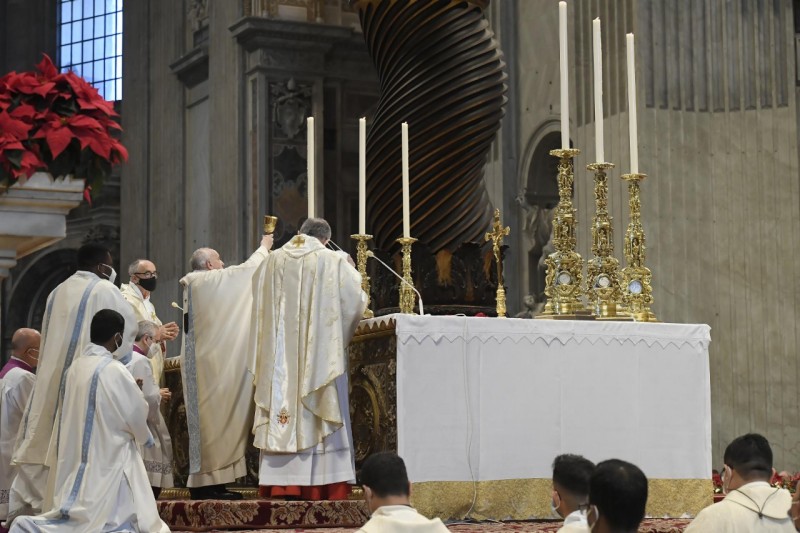Papal Masses and Liturgies
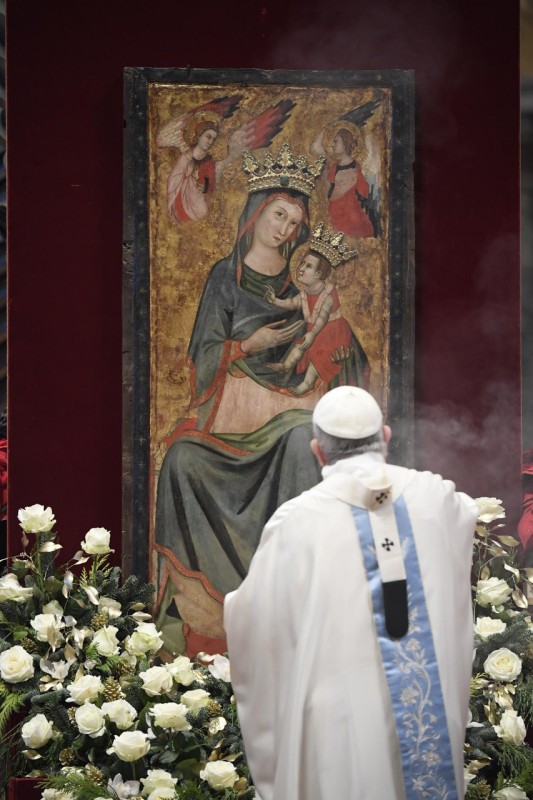
In General about Papal Liturgies
Throughout the year, the Holy Father offers public Masses on some special occasions and major solemnities, including Christmas and Easter.
The Holy Father’s schedule is currently only confirmed a few days in advance, but we have created a list of traditional Papal liturgies, for which we are accepting ticket requests, although some are not yet officially confirmed for this year.
Due to Pope Francis’ recent health problems, the Holy Father has as of lately not been able to celebrate a whole Papal Mass himself. Therefore, since May 2022, the Holy Father has usually attended the Mass in choir and given the homily, while one of the Cardinals have been the main celebrant for the Mass.
Below, you can find more information about some of these traditional Papal liturgies and some information which we hope will be helpful as you plan your pilgrimage to Rome.
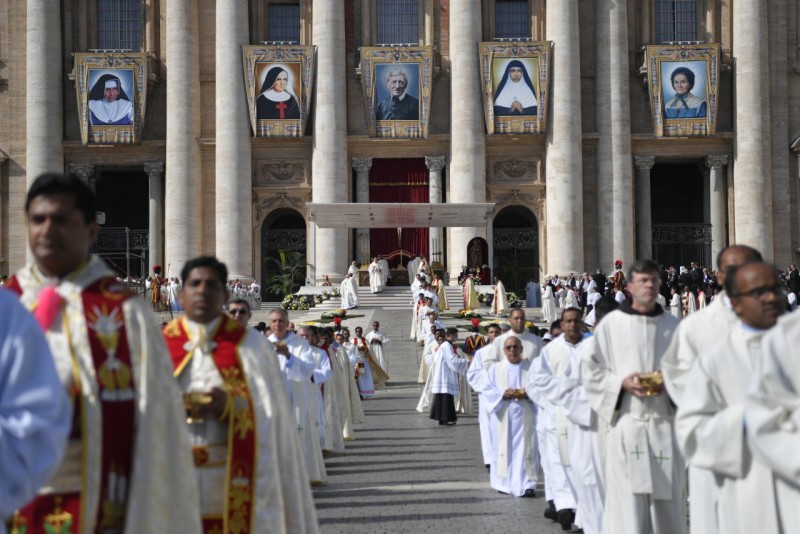
Canonization Masses
The Rite of Canonization, celebrated during Holy Mass, is the final and conclusive moment of a long and thorough process through which the Holy Father, through a solemn and infallible act, determines that a Blessed may be inscribed in the Roll of Saints, that is, the official list of those who are venerated as such in the Catholic Church and that his or her memory be celebrated by the universal Church.
Historically, the Church has from the very beginning always honored the Apostles and Martyrs, “celebrating them with special veneration together with the Blessed Virgin Mary and the holy Angels, and has piously implored the help of their intercession” (John Paul II, Apostolic Constitution Divinus perfectionis Magister). Although originally only Apostles and Martyrs were venerated, the Church overtime extended the liturgical remembrance also to other persons who, though they did not die for the faith, bore witness to a heroic degree to the commitments of Baptism by spiritual and daily “martyrdom” (“witness”). Thus entered into the veneration of God’s people, along with the Martyrs, other confessors of the faith: Pastors, Ascetics and Virgins who realized the original and constitutive idea of baptismal holiness as conformity to the virgin, poor and obedient Christ (cf. Introduction Litany of the Saints) and finally all others, whom the singular exercise of Christian virtues and divine charisms commend to the pious devotion and imitation of the faithful (cf. John Paul II, Apost. Const. Divinus perfectionis Magister).
The solemn concluding act of canonization, takes place within the Eucharistic celebration, the sacrament in which God’s holy people are gathered in holy assembly to celebrate the Paschal Mystery of Christ, the “Thrice Holy.” The rite includes:
– Hymn Veni, creator Spiritus: this is the hymn addressed to the Holy Spirit, the Giver of all holiness; the gift of new saints is like “a new epiclesis” on the Church.
– Petition: the Prefect of the Congregation for the Saints, accompanied by the postulators, asks the Holy Father that the Canonization of the Blesseds of whom he outlines the biography and heroic virtues be proceeded with.
– Litany of the Saints: in the liturgy, heaven opens, and the earthly assembly joins the heavenly assembly in intoning that hymn eternally sung in the heavenly seats; the intercession of the Saints among whom the newly canonized will be numbered is requested.
– Formula of Canonization: the Holy Father, through this official and solemn act, declares and defines as “Saint” the Blessed, authorizing the celebration of their liturgical memory for the universal Church.
– Hymn of praise and thanksgiving: addressed to God, for the gift of the new Saints.
– Thanksgiving: the Prefect of the Congregation for the Saints, together with the postulators, thanks the Holy Father and requests that he proceed with the drafting of the Apostolic Letter about the Canonization having taken place.
Each sign during a Canonization Mass is filled with meaning, including:
– The flowers next to the relics: are a reminder that the saints, especially the martyrs, are the seed of new Christians and from their witness, grafted into the sacrifice of Christ (cf. Jn. 12:24-26), the freshness of the Gospel message and the vitality of the Church today flourishes.
– The veneration of the relics: through the offering of incense by some representatives of God’s people, reminds us that holiness is the vocation of all the baptized and that the “Saint,” officially recognized by the Church, comes from God’s holy people in whom he exercised his virtues.
– The banner with the picture: the Saint, who is now part of the heavenly host of Saints, has a name and a face. What the rite wants to recall “is above all the call to holiness that the Lord makes to each of us, that call he addresses to you as well: ‘Be holy, for I am holy'” (Lev. 11:44; 1 Pet. 1:16) (Francis, Ap. Ex. Gaudete et Exsultate 10).
Next Canonization Mass: October 9, 2022
The next Canonization Mass will be held in St. Peter’s Square on Sunday, October 9, 2022 at 10:00 a.m. for the Canonization of Blessed Giovanni Battista Scalabrini and Blessed Artemide Zatti. If you would like to request tickets for this Mass, please contact our office.
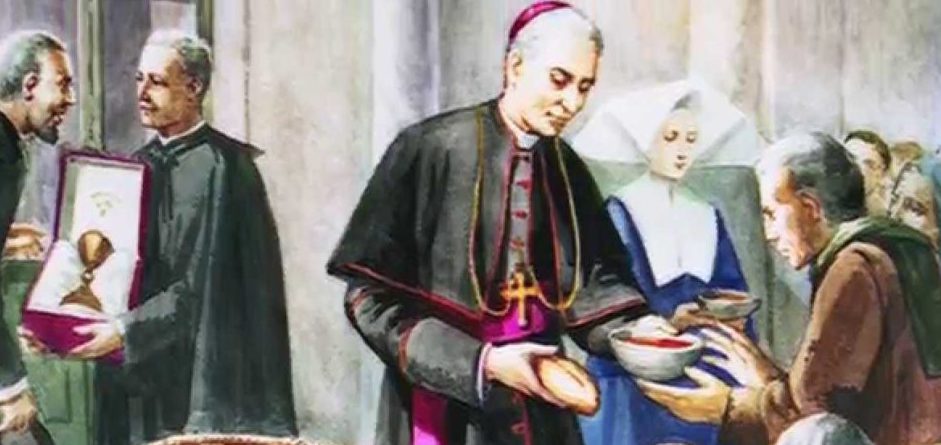
“May I sanctify myself and sanctify all souls entrusted to me.”
John Baptist Scalabrini was born in Fino Mornasco (Como, Italy) on July 8, 1839. He entered the seminary in 1857 and received priestly ordination on May 30, 1863. After serving as rector in the minor seminary in Como, he was appointed parish priest of San Bartolomeo in the same city in 1870. At the age of 36, on December 12, 1875, he received the appointment as bishop of Piacenza, and on January 30, 1876, he was consecrated in Rome. For 29 years he carried out an intense apostolate in the diocese of Piacenza: he made five pastoral visits, convened and celebrated three diocesan synods, increased and renewed formation and studies in the three seminaries of his diocese, preached and taught the catechism, took special care of the liturgy and liturgical singing, and promoted Eucharistic worship and Marian devotion. He was also founded a diocesan newspaper to promote good journalism and dedicated himself to the needs of the poor and the elderly.
When learning about the sufferings which the early emigrants to the Americas, especially to the United States and Brazil, encountered in the new world, Scalabrini was moved with compassion and committed himself to making ecclesiastical and state authorities aware of them and to raise public awareness. To assist and protect migrants, Scalabrini founded the Congregation of the Missionaries of St. Charles Borromeo in 1887. In the last years of his life he personally visited emigrants and his missionaries in the United States and Brazil. Returning to Italy, exhausted in strength, he died in Piacenza, Italy, on June 1, 1905.
John Baptist Scalabrini was declared Blessed by St. John Paul II on November 9, 1997.
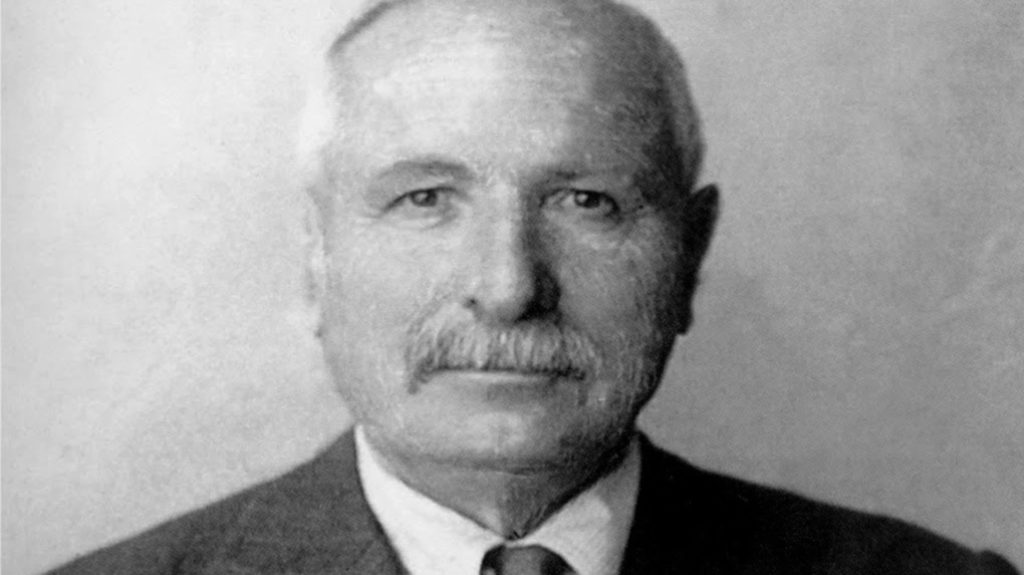
“An exemplary religious, punctual in fulfilling his community duties and completely dedicated to the service of the needy.”
Artemide Zatti was born in Boretto (Reggio Emilia) on October 12, 1880. The family was poor, and already at the age of nine he had to be a day wagerer on the surrounding farms. Forced by poverty, the Zatti family migrated to Argentina in early 1897 and settled in Bahìa Blanca. Here, Artemide immediately began attending the parish run by the Salesians, finding his spiritual director in Pastor Don Carlo Cavalli, a pious man of extraordinary goodness, who inspired Artemide to join the Salesian at the age of 20.
When caring for a young priest suffering from tuberculosis, Artemide himself contracted the disease. Father Evasio Garrone was chosen to care for him, and he invited Artemis to pray to Mary Help of Christians for healing, suggesting that he made her a promise: “If She heals you, you will devote your whole life to these sick people.” Artemis gladly promised Our Lady this, and was miraculously healed. Recounting the story later, Artemis simply said: “I believed, I promised, I was healed.” His path was now clearly marked out and he embarked on it with enthusiasm, accepting with humility and docility the sacrifice of renouncing the priesthood. Artemis made his First Profession as a lay brother on January 11, 1908 and his Perpetual Profession on February 8, 1911. Consistent with his promise to Our Lady, he consecrated himself to the work at the hospital, initially managing the attached pharmacy, but later taking full responsibility for the hospital when Father Garrone died in 1913. Brother Artemis became its vice-director, administrator, and an expert nurse esteemed by both the sick and by the doctors, who gradually gave him greater and greater freedom of action.
His service was not limited to the hospital but extended to the whole city indeed to the two localities located on the banks of the Negro River: Viedma and Patagones. In case of need he moved at any hour of the day or night, in any weather, reaching the hovels of the suburbs and doing everything free of charge. His fame as a holy nurse spread throughout the South and from all over Patagonia sick people came to him. It was not uncommon for the sick to prefer the visit of the holy nurse to that of the doctors.
Artemide Zatti loved his sick and saw Jesus himself in them, so much so that when se asked the Sisters for clothes for a new boy who had arrived, he would say, “Sister, do you have a shirt for a 12-year-old Jesus?” Faithful to the Salesian spirit and to the motto bequeathed by Don Bosco to his sons – “work and temperance” – he carried out his work with habitual readiness of mind, with a heroic spirit of sacrifice, and with absolute detachment from all personal satisfaction, never taking any vacations or time for rest.
Brother Artemide was a man easy to interact with, filled with sympathy and who enjoyed talking to humble people. But he was above all a man of God. He radiated Him. One rather unbelieving hospital doctor will say, “When I saw Mr. Zatti my disbelief wavered.” And another, “I have believed in God since I knew Mr. Zatti.”
In 1950 the indefatigable nurse fell from a ladder, and it was on that occasion that the symptoms of cancer manifested themselves, which he lucidly diagnosed. Nevertheless, Brother Artemide continued his mission for another year, until after heroically accepted sufferings, returning to the house of the Father on March 15, 1951, surrounded by the affection and gratitude of an entire population.
